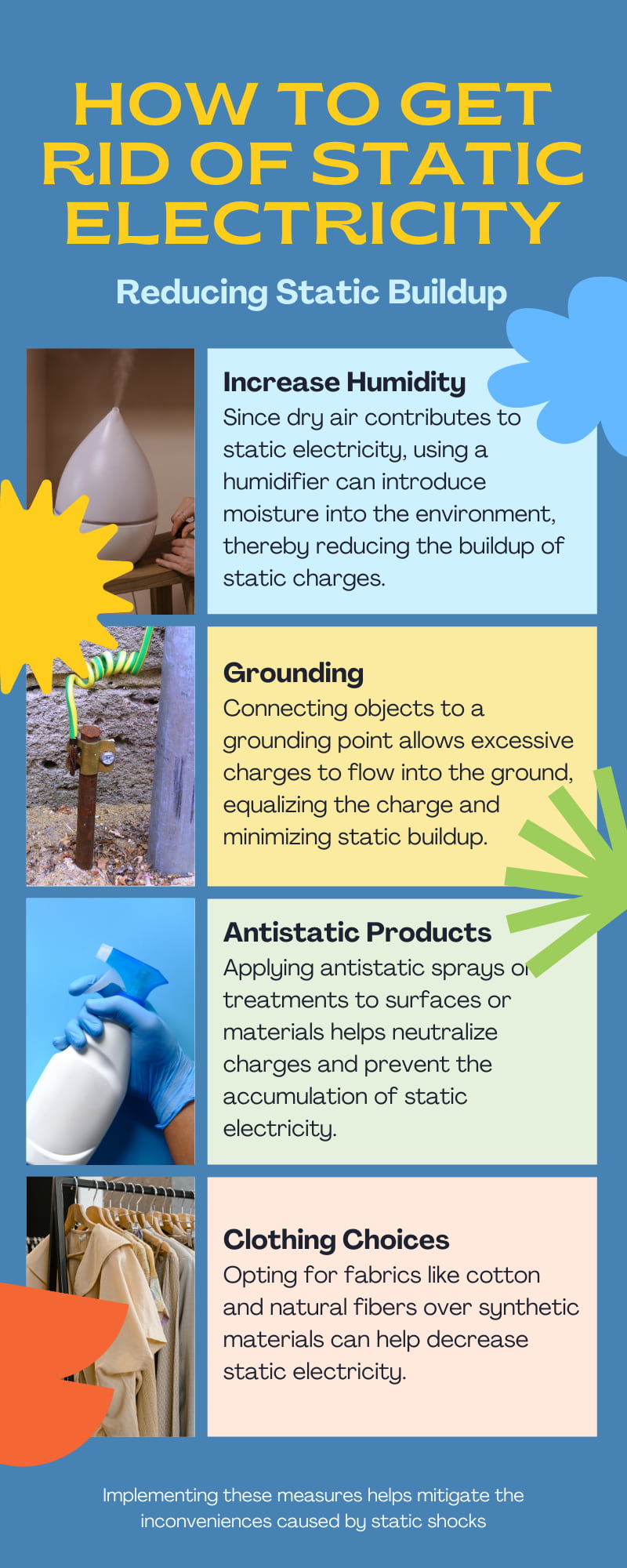Unraveling the Wonders of Static Electricity

Static electricity is an intriguing phenomenon that has a profound influence on various aspects of our lives, from the mesmerizing crackling sparks we experience during winter to the captivating realm of electrical charges.
Let's delve into the intricate nature of static electricity, exploring its fundamental principles, everyday applications, and dispelling commonly held misconceptions.
Get ready to be electrified by the wealth of knowledge that lies ahead!
What is Static Electricity?
Static Electricity Definition
Static electricity refers to the accumulation of electric charges on the surface of an object due to an imbalance of electrons.
This phenomenon occurs when specific materials, such as rubber or plastic, gain or lose electrons through various processes like friction, contact, or induction.
How Does Static Electricity Work?
Digging deeper, we uncover that static electricity arises from an unequal distribution of electrons.
When two objects come into contact, electrons may transfer between them, resulting in one object becoming positively charged (electron deficit) and the other becoming negatively charged (electron surplus). This charge imbalance leads to fascinating effects.
Electrostatic Forces
Coulomb's Law
To comprehend the forces at play, we turn to Coulomb's Law, which elucidates the interaction between electric charges.
This law reveals that like charges repel each other, while opposite charges attract, forming the basis for various static electricity phenomena.
The Triboelectric Series
By exploring the Triboelectric Series, we uncover a captivating hierarchy of materials based on their propensity to gain or lose electrons.
Understanding this series enables us to predict and control the transfer of static charges, facilitating applications in diverse fields.
Everyday Applications
Static Electricity in Nature
While static electricity is often associated with everyday occurrences such as hair standing on end or the surprising zap of a doorknob, it also plays a crucial role in natural phenomena like lightning, which illuminates the sky.
Let's take a look at the science behind lightning and its relationship with static electricity.
Static Electricity in Various Industries
Static electricity finds applications in a multitude of industries.
From electrostatic precipitators that remove pollutants from industrial emissions to the efficient painting of automobiles, we explore how harnessing static charges enhances efficiency and safety across different sectors.
Debunking Common Myths
Is Lightning Considered Static Electricity?
We address a prevalent misconception by clarifying the distinction between lightning and static electricity.
While both involve electrical charges, lightning is a rapid discharge caused by the accumulation of static electricity within thunderclouds.
Understanding this difference allows us to appreciate the awe-inspiring power of nature.
Static Electricity and Humidity
Dispelling another myth, we tackle the relationship between static electricity and humidity.
Contrary to popular belief, dry conditions actually promote the accumulation and discharge of static charges.
We explore the science behind this phenomenon and provide tips for effectively managing static electricity.
How to Get Rid of Static Electricity

Reducing Static Buildup
A few practical techniques to minimize the impact of static electricity in everyday situations include:
- utilizing antistatic sprays
- conductive mats
- making conscious clothing choices
- managing humidity levels
Implementing these measures helps mitigate the inconveniences caused by static shocks.
Safety Considerations
Static electricity poses safety risks in specific environments.
Implementing safety measures and precautions in certain industries where static control is of paramount importance, ensures protection against fires, explosions, and other hazardous incidents.
More on Static Electricity
Static electricity is a captivating force with diverse applications and effects.
By comprehending its underlying principles and dispelling common myths, we gain a fresh appreciation for this fascinating phenomenon.
Armed with practical tips for managing static electricity, we can confidently navigate its presence, ensuring safety and efficiency across various aspects of our lives.
FAQ's
What is the cause of static electricity?
Static electricity arises from an imbalance in the electric charges present on an object's surface. This phenomenon occurs when certain materials undergo processes such as friction, contact, or induction, causing them to either gain or lose electrons. This transfer of electrons generates an excess or deficit of charges, leading to the accumulation of static electricity.
What does it mean to have static electricity?
Experiencing static electricity means that an object or surface has accumulated an electric charge as a result of an imbalance in the number of electrons. This charge remains in place, creating an electrostatic field around the object. Static electricity is characterized by its ability to generate minor sparks, cause objects to stick together, or produce a gentle shock upon discharge.
How to eliminate static electricity?
To reduce or eliminate static electricity, you can consider the following strategies:
1. Increase humidity: Since dry air contributes to static electricity, using a humidifier can introduce moisture into the environment, thereby reducing the buildup of static charges.
2. Grounding: Connecting objects to a grounding point allows excessive charges to flow into the ground, equalizing the charge and minimizing static buildup. This can be achieved by utilizing grounding mats, wristbands, or by touching a grounded metal object.
3. Antistatic products: Applying antistatic sprays or treatments to surfaces or materials helps neutralize charges and prevent the accumulation of static electricity.
4. Clothing choices: Opting for fabrics like cotton and natural fibers over synthetic materials can help decrease static electricity. These fabrics generate less static cling and are less likely to cause shocks.
What are four instances of static electricity?
Static electricity manifests itself in various forms in our daily lives. Here are four examples:
1. Clothes adhering together: When removing clothes from a dryer, static electricity can cause them to cling to one another, resulting in garments sticking together.
2. Hair standing on end: Rubbing a balloon against your hair can transfer electrons, leading to the positively charged hair strands repelling each other and causing them to stand on end.
3. Static shock: Walking on a carpeted floor and then touching a metal doorknob can generate a static charge on your body. The subsequent contact with the doorknob allows the charge to discharge, resulting in a mild shock.
4. Lightning: Lightning serves as an extreme demonstration of static electricity. It occurs when there is a substantial buildup of static charges in the atmosphere, leading to a sudden and forceful discharge of electricity between clouds or between a cloud and the ground.




